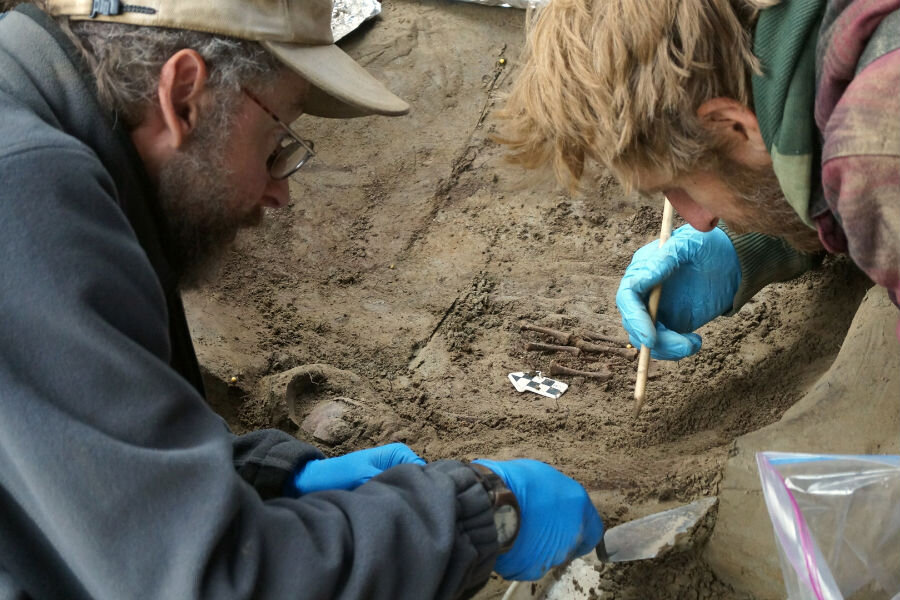Ice Age infant burial ground offers clues to life for early Arctic settlers
Loading...
In a world where Americans can order groceries delivered right to their door, the hardships endured by our hunter-gatherer ancestors may seem irretrievably removed from our current frame of reference. However, the discovery of an infant burial site in Alaskan sand dunes offers a glimpse into how the first settlers of North America dealt with a universally understood tragedy: the death of offspring.
An international team of researchers, led by University of Alaska anthropological archaeologist Ben Potter, uncovered the remains of two infants in 2013 while excavating the Paleolithic Upward Sun River archaeological site near the Tanana River in central Alaska. The team published their findings online Monday in the Proceedings of the National Academy of Sciences.
The two infant skeletons were found carefully positioned on their backs alongside tools and decoratively carved antlers that had been coated with ochre, suggesting that their hunter-gatherer families likely mourned and ritualized their loss in similar ways to modern humans. What’s more, there is some evidence to suggest that the two may have been twins and that the first to die may have been later exhumed to be buried alongside the other, the researchers speculated.
Dr. Potter and his team discovered the burial pit about 15 inches below a previously excavated hearth that contained the cremated remains of a 3-year-old child, which had been found in 2010 by the same research team. The researchers have dated each of the three specimens to approximately 11,500 years ago and believed they are the earliest known human remains from the North American subarctic.
“One of the most intriguing aspects of the site is the differential mortuary treatment of infants and children in the burial and overlying cremation,” the researchers write. The different treatment of the remains may hold some cultural clues about how paleoindians viewed child development in terms of “naming, ensoulment, or other ideological factors.”
Based on radio-carbon dating of flora and fauna found during excavation, the researchers believe the cremation and burials were likely conducted by the same hunter-gatherer group. The presence of immature squirrels and salmon in both sites suggests that they were both buried between mid-July and early August. However, the team cannot be sure whether they occurred during the same season or subsequent seasons.
These funerary sites share several similarities with other paleoindian burial sites already recorded in the archaeological record, including the use of interment pits, the presence of ochre, and the inclusion of burial goods.
However, one striking difference, the researchers write, is the location of the burial site within a residential area. Most burial sites in North American and Europe are situated further away from living and cooking quarters. Yet, the presence of small mammals and fish suggests that the hearth was not a designated cremation site but rather a central fire used in cooking. This could indicate that children were consciously buried close to home.
While the sample size is very small, the loss of three children in what appears to be a short period of time during early summer when food sources were likely most abundant reinforces the current theory that child mortally among subarctic hunter-gatherers was likely quite high. Further DNA analysis could potentially offer additional clues about the individuals and the rituals and customs practiced by paleoindians.








